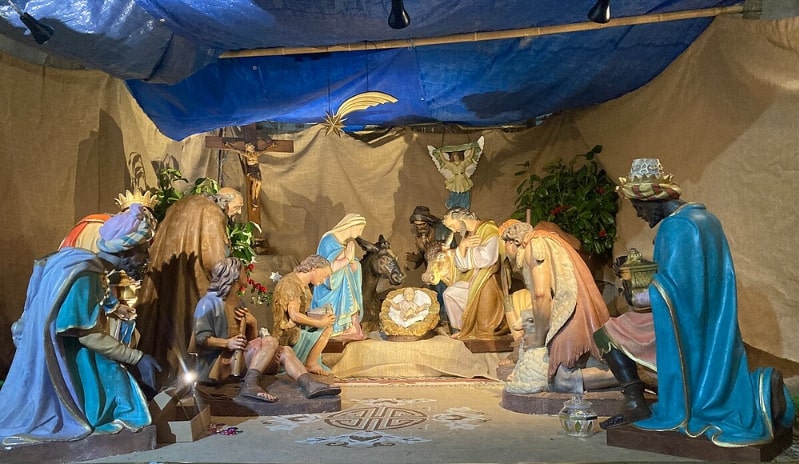Introduction: In this article, Katie Rebecca Merkley writes more about the special Christmas messages our ancestors had printed in their local newspapers. Katie specializes in U.S. research for family history, enjoys writing and researching, and is developing curricula for teaching children genealogy.
This article may have appeared in your feed accompanied by a colorful picture. However, this is not how your ancestors posted and received messages. They used newspapers. In part 2 of this series, I will continue looking at Christmas messages our ancestors published in local newspapers in the United States in the late 18th century.

In the mid-1790s, a poet paid tribute to the shepherds and wise men of old. The poem was published in a New York newspaper in December 1795.

The poem describes angles and celestial chanting, then addresses the shepherds:
Fear not ye shepherds, ’tis the Prince of Peace comes,
Full of compassion, full of love and pity;
Bringing salvation for all sorts of mankind,
For all his people.
Go pay your homage to your infant Savior;
Laid in a manger, view the Lord of glory
Meanly attended, yet the great Messias,
Yon star shall guide you.
The poem continues praising God, then closes with:
O may impressions of his boundless mercy,
Ever remind me of my grateful duty;
Sweet the employment to proclaim his goodness,
And sing his praises.
Based on this conclusion, it can be assumed that the anonymous writer was inclined to celebrate Christ’s birth by praising God. He may have had some experiences in his life which he attributed to God’s love and mercy. Some people who feel this for themselves also wish others to feel it. Publishing the poem in the newspaper provided a way to attempt that.
Later that decade in Boston, someone was impressed with a comment – an “elegant sentiment [that] was given in a private circle on Christmas day” – and it was published in the newspaper.

The comment:
“When we recognize the star which in ancient times appeared in the east, to lead our forefathers to a Savior; let us gratefully remember a WASHINGTON, who in later times appeared in the west, and led our armies to victory and glory.”
The colonies declared independence from Britain in 1776 and became the United States. The Revolutionary War officially ended in 1783. In 1797, when the above comment was made, the United States was still young, and the Revolution was still recent.
According to Timothy Ballard, George Washington relied on God to help the Americans win the war.* He encouraged his men to pray regularly and repent of their sins to be worthy of God’s help. Ballard’s book, The Washington Hypothesis, recounts several tales of miraculous victories on the side of the patriots and attributes them to God’s hand, or Providence, as was the language used in Washington’s day.
With this in mind, it seems appropriate to remember George Washington and the victories he led during the season when many remember Christ’s birth. The above newspaper article was published close enough to the Revolutionary War that it’s quite possible the commenter in the author’s private circle was either a witness to events of the Revolutionary War or heard about events from those with firsthand knowledge.
Note that what was published in the newspaper was what another person said, thereby making the comment viral in days before the internet. A newspaper printed in Rhode Island in 1800 is another example of something going viral the old-fashioned way. The header of this rather tongue-in-cheek article reads:
Copy of a Painter’s Bill, presented to the Vestry at Christmas, for work done at the painted walls of a well known church in Ireland.
Somehow, painting walls in a church in Ireland inspired the author to create a list alluding to many Bible stories. Who knows how many newspapers it was published in, but this article somehow made its way to America. Evidently, the Guardian of Liberty newspaper editor found the message relevant in October, even though the heading mentioned Christmas.

That article wasn’t the only one that went viral. Some of the other articles discussed in this series appeared at least twice in search results in GenealogyBank, each result in a different newspaper. It was a common practice for newspaper editors to subscribe to neighboring newspapers so that they could post the articles they liked in their own newspaper. This was the old-fashioned way things went viral.
Our ancestors may not have had the repost button we have today, but they had other ways of sharing messages they liked. Newspapers were their medium of communication. If someone liked what they read, they likely told their friends, family, and neighbors, perhaps reading it out loud. This Christmas, what messages will you share?
* Timothy Ballard, “The Washington Hypothesis” (Salt Lake City: Deseret Book Company, 2016).
Explore over 330 years of newspapers and historical records in GenealogyBank. Discover your family story! Start a 7-Day Free Trial
Note on the header image: “The Adoration of the Shepherds,” by Bartolomé Esteban Murillo, c. 1650. Credit: Museo del Prado; Wikimedia Commons.
Related Article:
